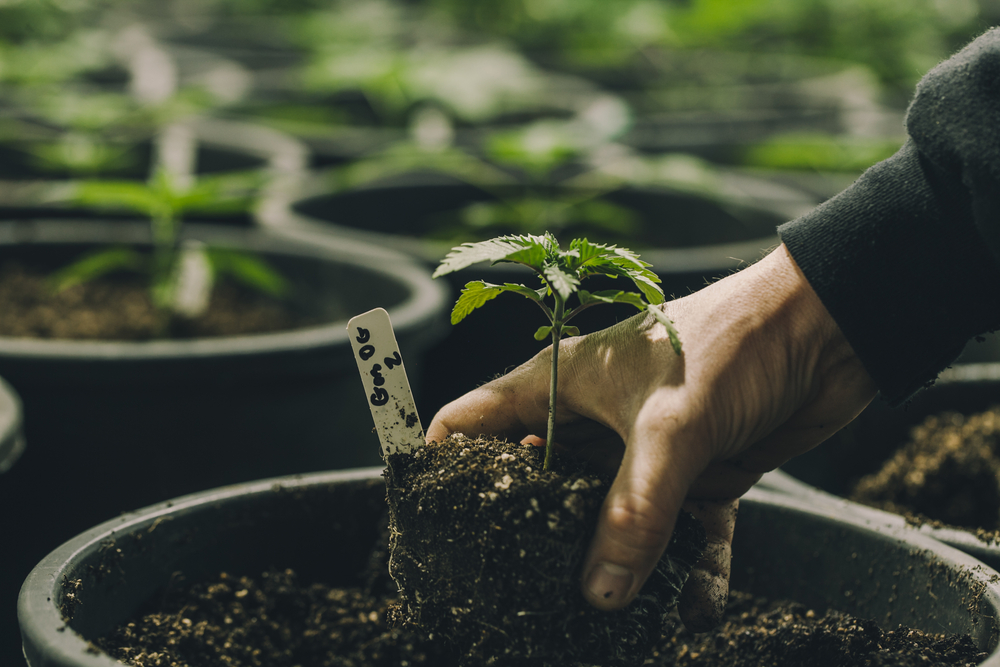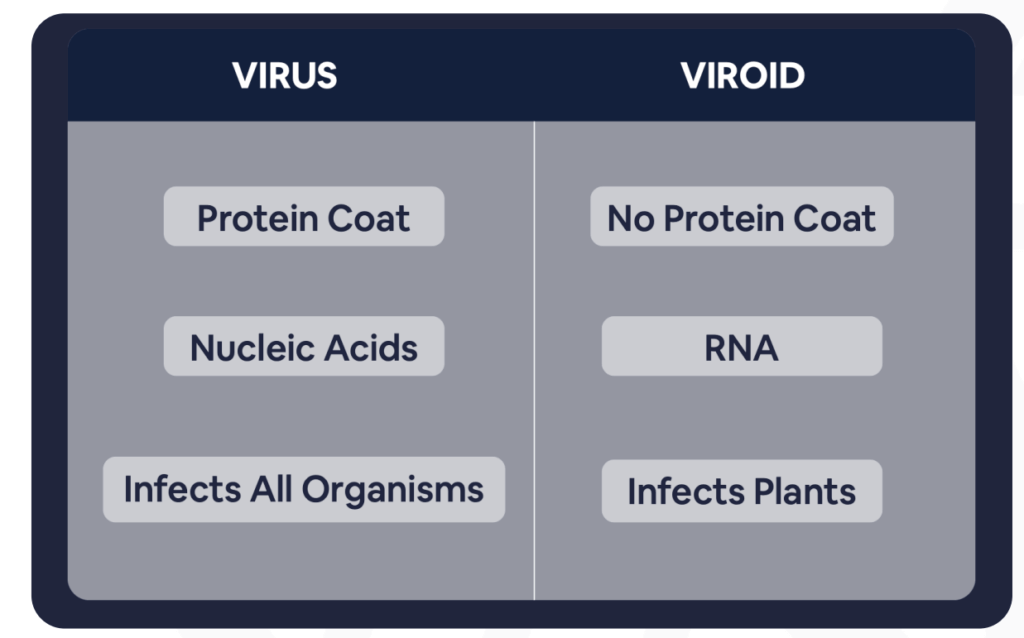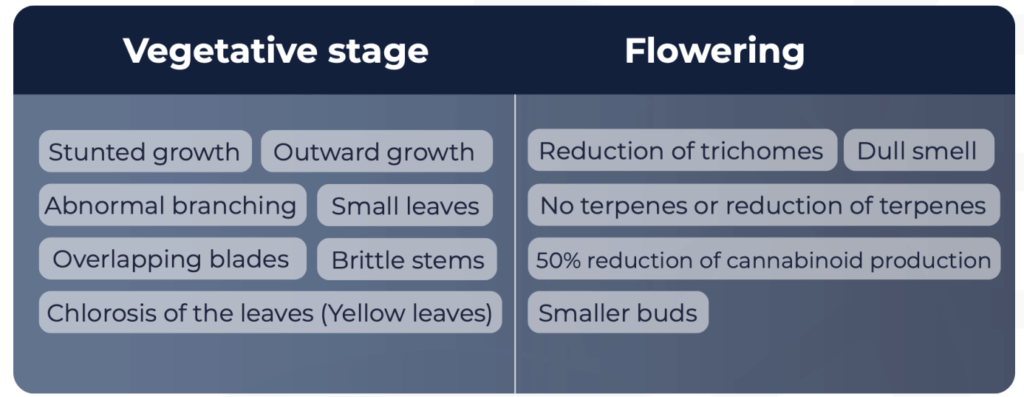Member Blog: How to Prevent Pathogen Infections in Cannabis Gardens

by María Zuccarelli, MyFloraDNA
One pathogen can spread through a garden and ruin everything that was going well.
A pathogen is “an organism causing the disease to its host, with the severity of the disease symptoms referred to as virulence.” (NCBI) There are different kinds of pathogens. These are the main three infecting cannabis crops:
- Viruses (ex. Cannabis Cryptic Virus)
- Viroids (ex. Hop Latent Viroid)
- Fungus (ex. Botrytis)
Well, here are five recommendations approved by Dr. Angel Fernandez – Ph.D. in plant science with a complete background in cannabis genetics and genomics, CEO and Co-Founder of MyFloraDNA – The following recommendations will impede the spread of a pathogen in your cannabis garden so the next time you’re prepared for a worst-case scenario.
1. The first step: remove.
If a plant’s result comes out positive, it must be removed from the field or greenhouse as soon as possible, without exposing it directly to other plants.
2. Destroy.
Ironically, the best solution to avoid the destruction of your garden is to dispose of infected plants. If the infection is in a mother plant, remember to remove its clones from your growing facility and test them as fast as possible with your trusted genomic laboratory.
3. Don’t deny it, take action and prevent the spread.
If one plant is positive, assume the viroid is present in your field and extreme your prevention strategies.
- Sterilize all tools used
- Control your personnel and visitors
- Do not jump from one plant to another without sterilizing your equipment
4. Don’t look away and take responsibility for your problem. Test regularly.
It doesn’t matter if other plants don’t return positives. Some pathogens remain dormant for weeks (like Botrytis or “bud rot”). Stay alert and test regularly.
5. Keep an eye on pests, they are pathogens’ best friends.
Control pests. One of the causes of quick pathogen propagation in Cannabis fields is pest infections, like Whiteflies.
How do you know if a plant is infected?
It might sound obvious, but pay attention to the symptoms. Anyways, the most effective way is by requesting RNA testing from your trusted genomic laboratory.
RNA testing for pathogen detection is the easiest way to detect infected plants. The results are obtained through the qPCR method, determining whether your samples are positive or negative for the pathogen you wish to detect.
The top 7 cannabis pathogens are:
Commonly known as Dudding Disease. HLV is a single-stranded, circular infectious RNA viroid (it is not a virus).
Symptoms during vegetative stage: stunted growth, outward growth, abnormal branching, small leaves, overlapping blades, brittle stems, chlorosis on the leaves (yellow leaves),
Symptoms during flowering stage: trichome reduction, dull smell, no terpenes or reduction of terpenes, reduction of cannabinoid production, smaller buds.
- Lettuce Chlorosis Virus (LCV)
This RNA virus can infect plants.
Symptoms: yellowing leaves showing necrosis, chlorotic leaves, lower yield, and leaf thickness.
- Beet Curly Top Virus (BCTV)
Beet curly top virus (BCTV) is a plant virus-containing single-stranded DNA.
Symptoms: Leaf curling, yellowing of leaves with purple veins, death of young seedlings, bud deformation, reduced bud quality, and yield.
- Cannabis Cryptic Virus (CCV)
Cannabis Cryptic Virus (CCV) is a double-stranded RNA virus that is known to infect plants without causing obvious symptoms.
Symptoms: Rolling and/or yellow leaves, smaller buds, fewer trichomes, cannabinoids, and terpenes.
- Alfalfa Mosaic Virus (AMV)
The main problem with this virus is that once plants are infected, there is no cure for mosaic viruses. For this reason, PREVENTION is KEY!
Symptoms: Severe stunting of plants, yellow mosaic or calico patterns occur on the foliage, and plants grow slowly and generally produce poor yields.
- Botrytis (gray mold)
This mold is one of the most damaging fungi that can kill cannabis plants within a week. It can remain dormant for long periods of time before damaging your plant.
Symptoms: Brown, water-soaked spots on buds, chlorotic areas on stems, gray-brown mass of spores on buds, interveinal yellowing leaves showing necrosis, and smaller buds.
Fusarium is a devastating fungus pretty frequent on cannabis crops.
Symptoms: wilts and bud, crown, and root rots, chlorotic leaves, stunted growth, plant death.
I am glad you kept reading until here and hope this guide helps you to keep growing healthy and safe cannabis plants!
Also, here are some interesting topics you may like when you click on them before you close this tab:
- https://thecannabisindustry.org/member-blog-what-growers-should-know-about-hop-latent-viroid/
- https://www.greenhousegrower.com/production/how-to-prevent-botrytis-from-ruining-your-cannabis-crop/
- https://mgmagazine.com/business/growing-horticulture/cannabis-nutrient-deficiencies/
- https://mgmagazine.com/business/growing-horticulture/biosecurity-practices-for-maintaining-a-healthy-grow/
- https://www.greenhousecanada.com/diseases-affecting-cannabis-in-greenhouses/
 About MyFloraDNA: We are a genomic laboratory based in Woodland California, delivering modern genomics for the Cannabis Industry. \
About MyFloraDNA: We are a genomic laboratory based in Woodland California, delivering modern genomics for the Cannabis Industry. \
Our services include Trait detection (cannabinoid profile and sex/gender ID), Pathogen Detection, and Genetic Validation Services. We offer breakthrough solutions using the inner power of your plants.
Author: María Zuccarelli – Marketing Manager at MyFloraDNA.
Marketing expert, with a portfolio of innovative and successful projects around the world. Native leader, resolutive and efficient. She brings creativity and proactivity to MyFloraDNA’s Marketing Department.
Editor: Felipe Cisternas




 Who asks if you think HLV may be in your garden?
Who asks if you think HLV may be in your garden?